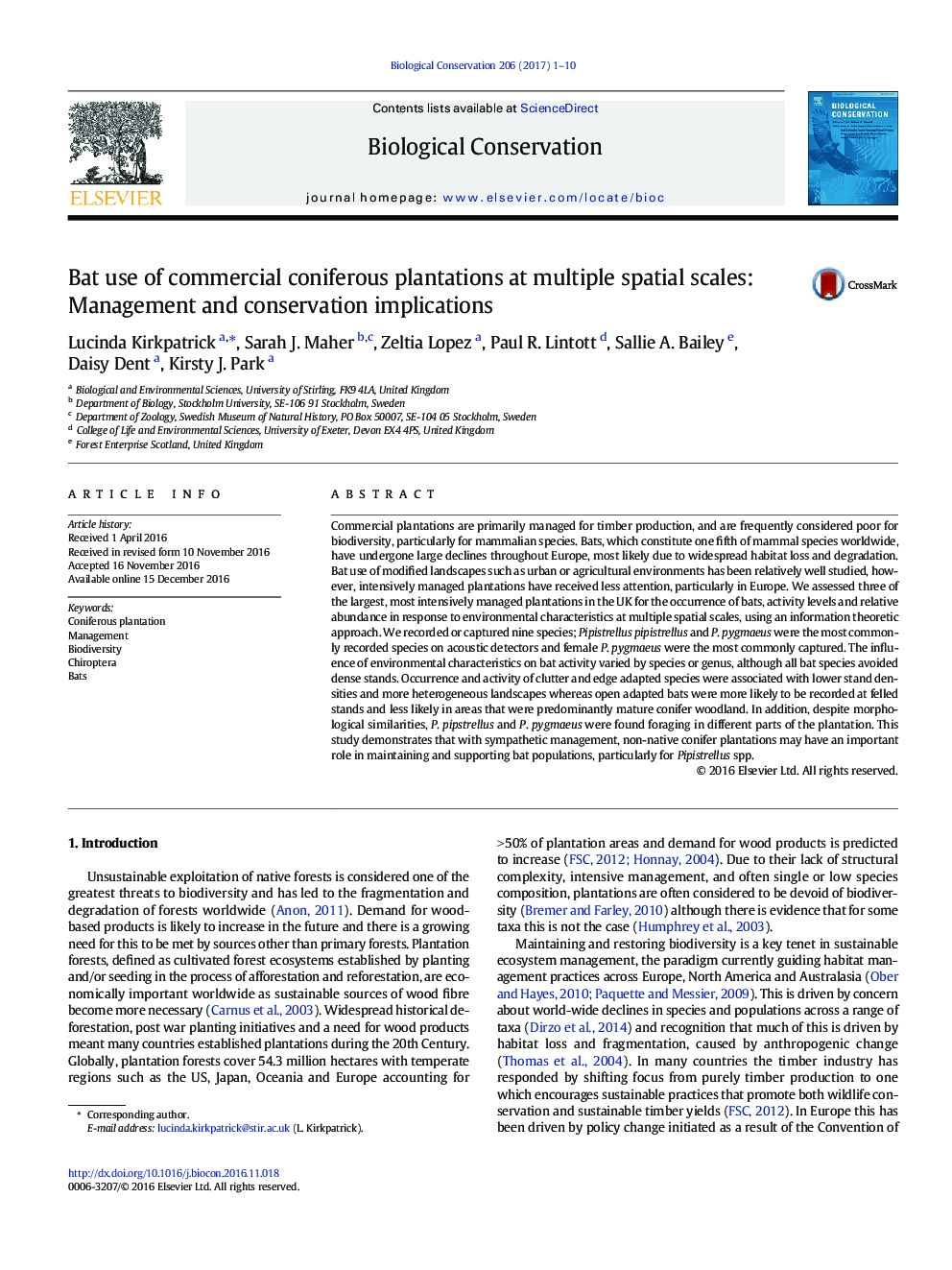| کد مقاله | کد نشریه | سال انتشار | مقاله انگلیسی | نسخه تمام متن |
|---|---|---|---|---|
| 5743265 | 1617896 | 2017 | 10 صفحه PDF | دانلود رایگان |
- Many studies have demonstrated active avoidance by bats of non-native conifer plantations.
- We found a wide range of bat species using Sitka Spruce plantations, particularly Pipistrellus species.
- A high proportion of the Pipistrellus spp. captured were lactating females.
- Responses to local and landscape-scale habitat characteristics differed between species and foraging guilds.
- Increasing roost provision and maintaining thinning should benefit bat populations in plantations.
Commercial plantations are primarily managed for timber production, and are frequently considered poor for biodiversity, particularly for mammalian species. Bats, which constitute one fifth of mammal species worldwide, have undergone large declines throughout Europe, most likely due to widespread habitat loss and degradation. Bat use of modified landscapes such as urban or agricultural environments has been relatively well studied, however, intensively managed plantations have received less attention, particularly in Europe. We assessed three of the largest, most intensively managed plantations in the UK for the occurrence of bats, activity levels and relative abundance in response to environmental characteristics at multiple spatial scales, using an information theoretic approach. We recorded or captured nine species; Pipistrellus pipistrellus and P. pygmaeus were the most commonly recorded species on acoustic detectors and female P. pygmaeus were the most commonly captured. The influence of environmental characteristics on bat activity varied by species or genus, although all bat species avoided dense stands. Occurrence and activity of clutter and edge adapted species were associated with lower stand densities and more heterogeneous landscapes whereas open adapted bats were more likely to be recorded at felled stands and less likely in areas that were predominantly mature conifer woodland. In addition, despite morphological similarities, P. pipstrellus and P. pygmaeus were found foraging in different parts of the plantation. This study demonstrates that with sympathetic management, non-native conifer plantations may have an important role in maintaining and supporting bat populations, particularly for Pipistrellus spp.
Journal: Biological Conservation - Volume 206, February 2017, Pages 1-10
